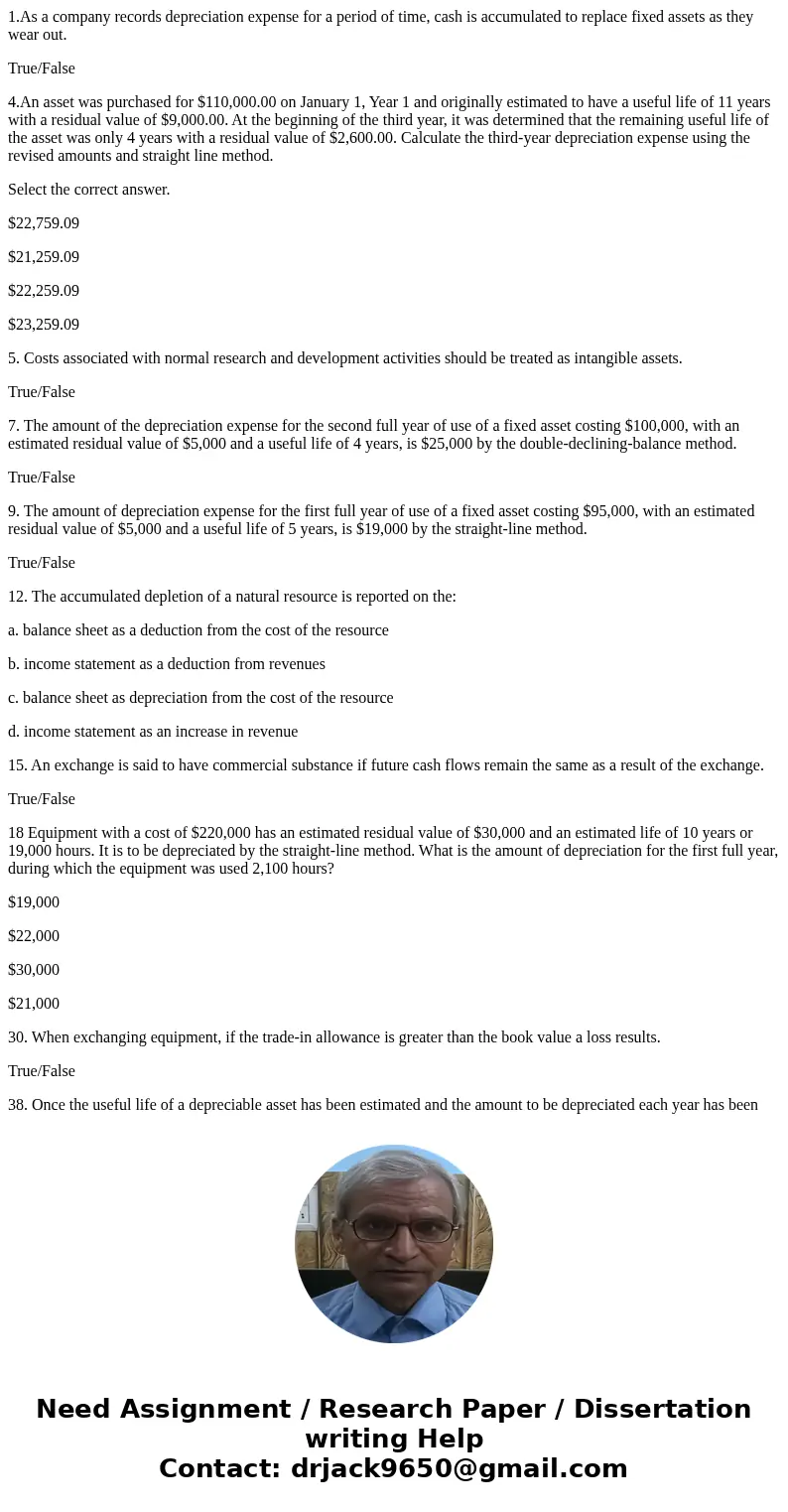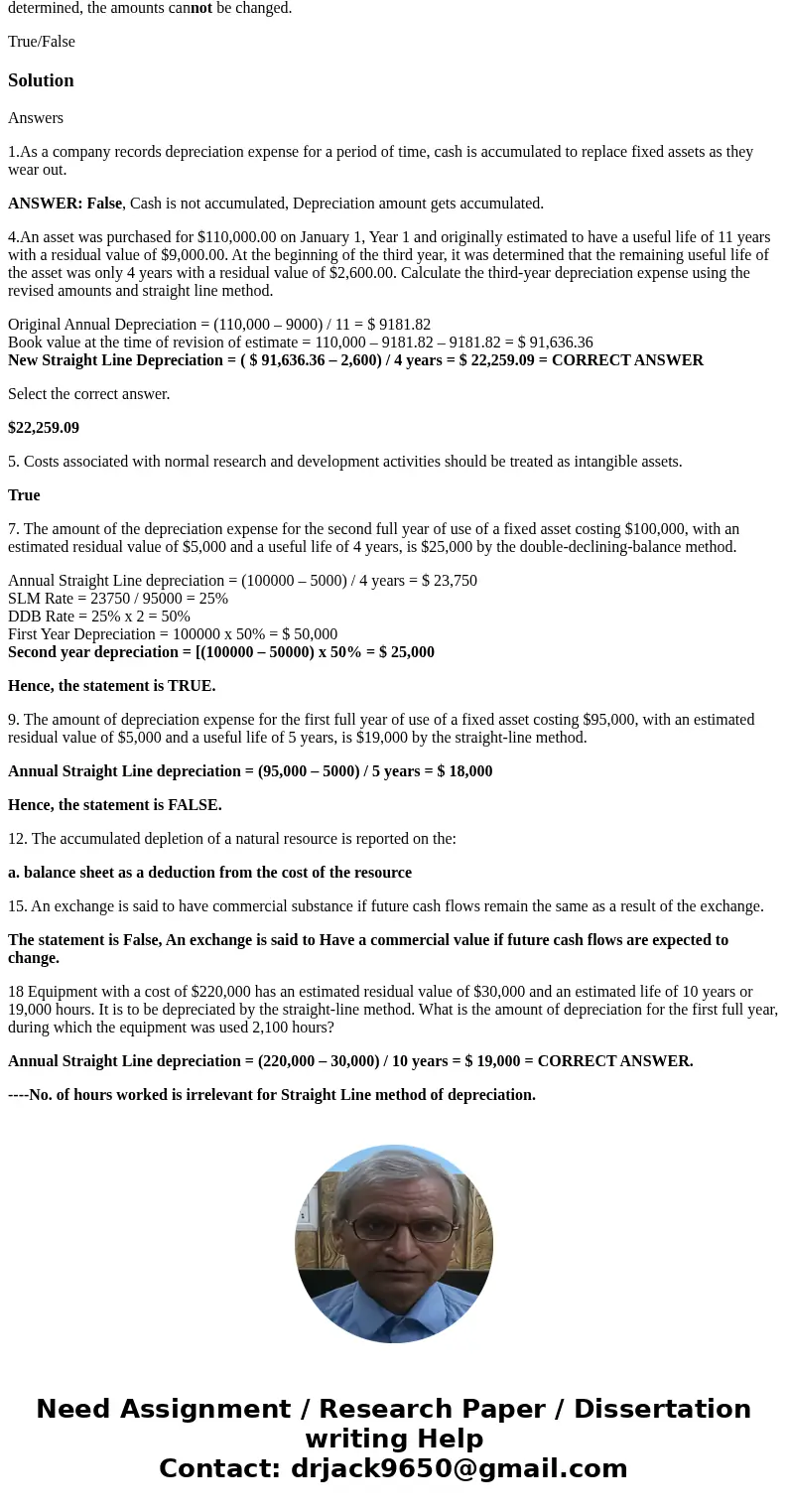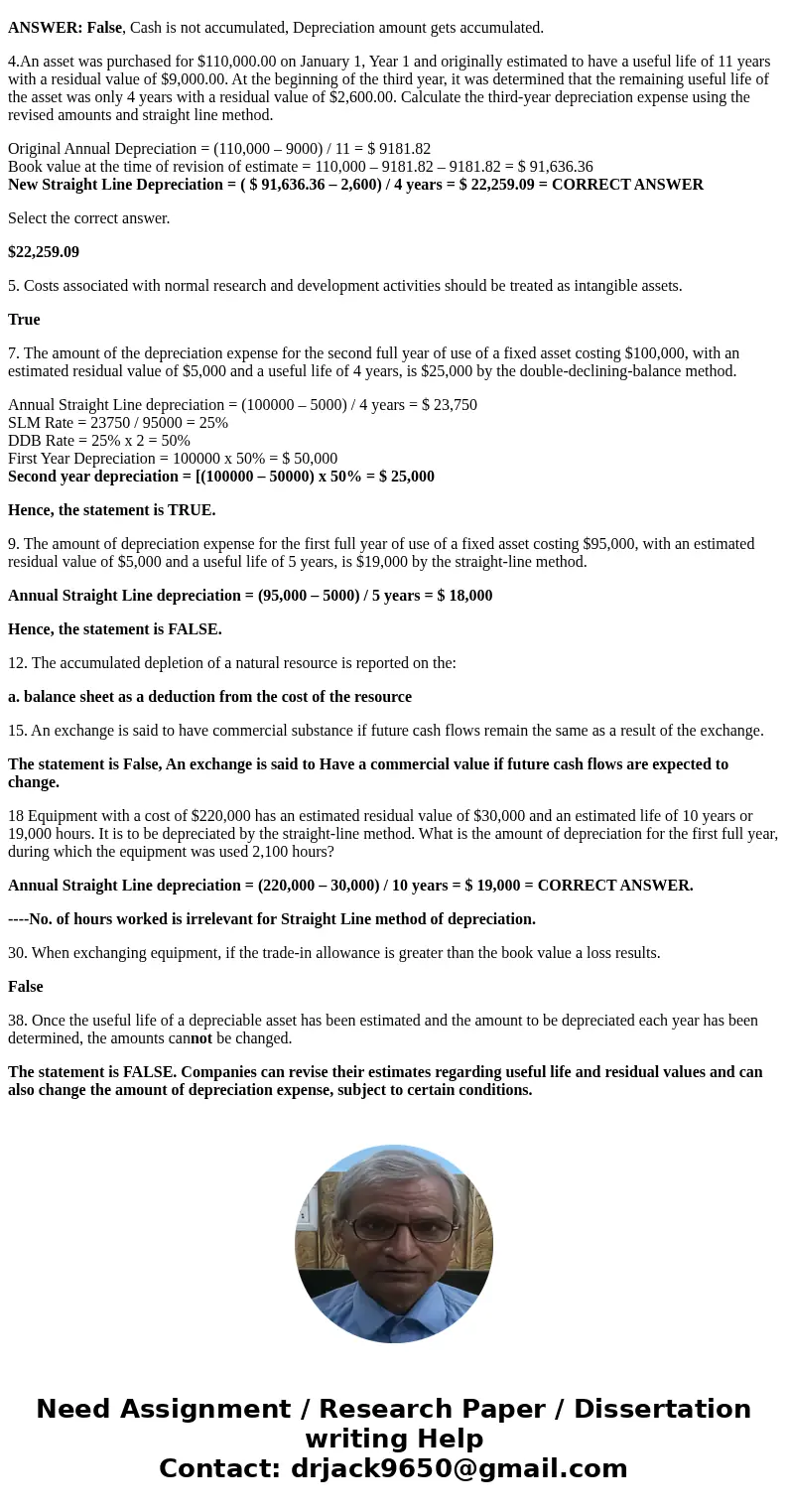1As a company records depreciation expense for a period of t
1.As a company records depreciation expense for a period of time, cash is accumulated to replace fixed assets as they wear out.
True/False
4.An asset was purchased for $110,000.00 on January 1, Year 1 and originally estimated to have a useful life of 11 years with a residual value of $9,000.00. At the beginning of the third year, it was determined that the remaining useful life of the asset was only 4 years with a residual value of $2,600.00. Calculate the third-year depreciation expense using the revised amounts and straight line method.
Select the correct answer.
$22,759.09
$21,259.09
$22,259.09
$23,259.09
5. Costs associated with normal research and development activities should be treated as intangible assets.
True/False
7. The amount of the depreciation expense for the second full year of use of a fixed asset costing $100,000, with an estimated residual value of $5,000 and a useful life of 4 years, is $25,000 by the double-declining-balance method.
True/False
9. The amount of depreciation expense for the first full year of use of a fixed asset costing $95,000, with an estimated residual value of $5,000 and a useful life of 5 years, is $19,000 by the straight-line method.
True/False
12. The accumulated depletion of a natural resource is reported on the:
a. balance sheet as a deduction from the cost of the resource
b. income statement as a deduction from revenues
c. balance sheet as depreciation from the cost of the resource
d. income statement as an increase in revenue
15. An exchange is said to have commercial substance if future cash flows remain the same as a result of the exchange.
True/False
18 Equipment with a cost of $220,000 has an estimated residual value of $30,000 and an estimated life of 10 years or 19,000 hours. It is to be depreciated by the straight-line method. What is the amount of depreciation for the first full year, during which the equipment was used 2,100 hours?
$19,000
$22,000
$30,000
$21,000
30. When exchanging equipment, if the trade-in allowance is greater than the book value a loss results.
True/False
38. Once the useful life of a depreciable asset has been estimated and the amount to be depreciated each year has been determined, the amounts cannot be changed.
True/False
Solution
Answers
1.As a company records depreciation expense for a period of time, cash is accumulated to replace fixed assets as they wear out.
ANSWER: False, Cash is not accumulated, Depreciation amount gets accumulated.
4.An asset was purchased for $110,000.00 on January 1, Year 1 and originally estimated to have a useful life of 11 years with a residual value of $9,000.00. At the beginning of the third year, it was determined that the remaining useful life of the asset was only 4 years with a residual value of $2,600.00. Calculate the third-year depreciation expense using the revised amounts and straight line method.
Original Annual Depreciation = (110,000 – 9000) / 11 = $ 9181.82
Book value at the time of revision of estimate = 110,000 – 9181.82 – 9181.82 = $ 91,636.36
New Straight Line Depreciation = ( $ 91,636.36 – 2,600) / 4 years = $ 22,259.09 = CORRECT ANSWER
Select the correct answer.
$22,259.09
5. Costs associated with normal research and development activities should be treated as intangible assets.
True
7. The amount of the depreciation expense for the second full year of use of a fixed asset costing $100,000, with an estimated residual value of $5,000 and a useful life of 4 years, is $25,000 by the double-declining-balance method.
Annual Straight Line depreciation = (100000 – 5000) / 4 years = $ 23,750
SLM Rate = 23750 / 95000 = 25%
DDB Rate = 25% x 2 = 50%
First Year Depreciation = 100000 x 50% = $ 50,000
Second year depreciation = [(100000 – 50000) x 50% = $ 25,000
Hence, the statement is TRUE.
9. The amount of depreciation expense for the first full year of use of a fixed asset costing $95,000, with an estimated residual value of $5,000 and a useful life of 5 years, is $19,000 by the straight-line method.
Annual Straight Line depreciation = (95,000 – 5000) / 5 years = $ 18,000
Hence, the statement is FALSE.
12. The accumulated depletion of a natural resource is reported on the:
a. balance sheet as a deduction from the cost of the resource
15. An exchange is said to have commercial substance if future cash flows remain the same as a result of the exchange.
The statement is False, An exchange is said to Have a commercial value if future cash flows are expected to change.
18 Equipment with a cost of $220,000 has an estimated residual value of $30,000 and an estimated life of 10 years or 19,000 hours. It is to be depreciated by the straight-line method. What is the amount of depreciation for the first full year, during which the equipment was used 2,100 hours?
Annual Straight Line depreciation = (220,000 – 30,000) / 10 years = $ 19,000 = CORRECT ANSWER.
----No. of hours worked is irrelevant for Straight Line method of depreciation.
30. When exchanging equipment, if the trade-in allowance is greater than the book value a loss results.
False
38. Once the useful life of a depreciable asset has been estimated and the amount to be depreciated each year has been determined, the amounts cannot be changed.
The statement is FALSE. Companies can revise their estimates regarding useful life and residual values and can also change the amount of depreciation expense, subject to certain conditions.



 Homework Sourse
Homework Sourse